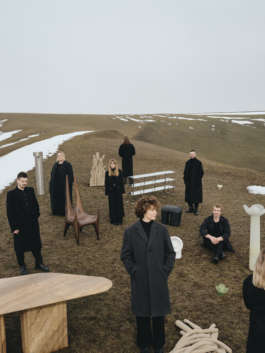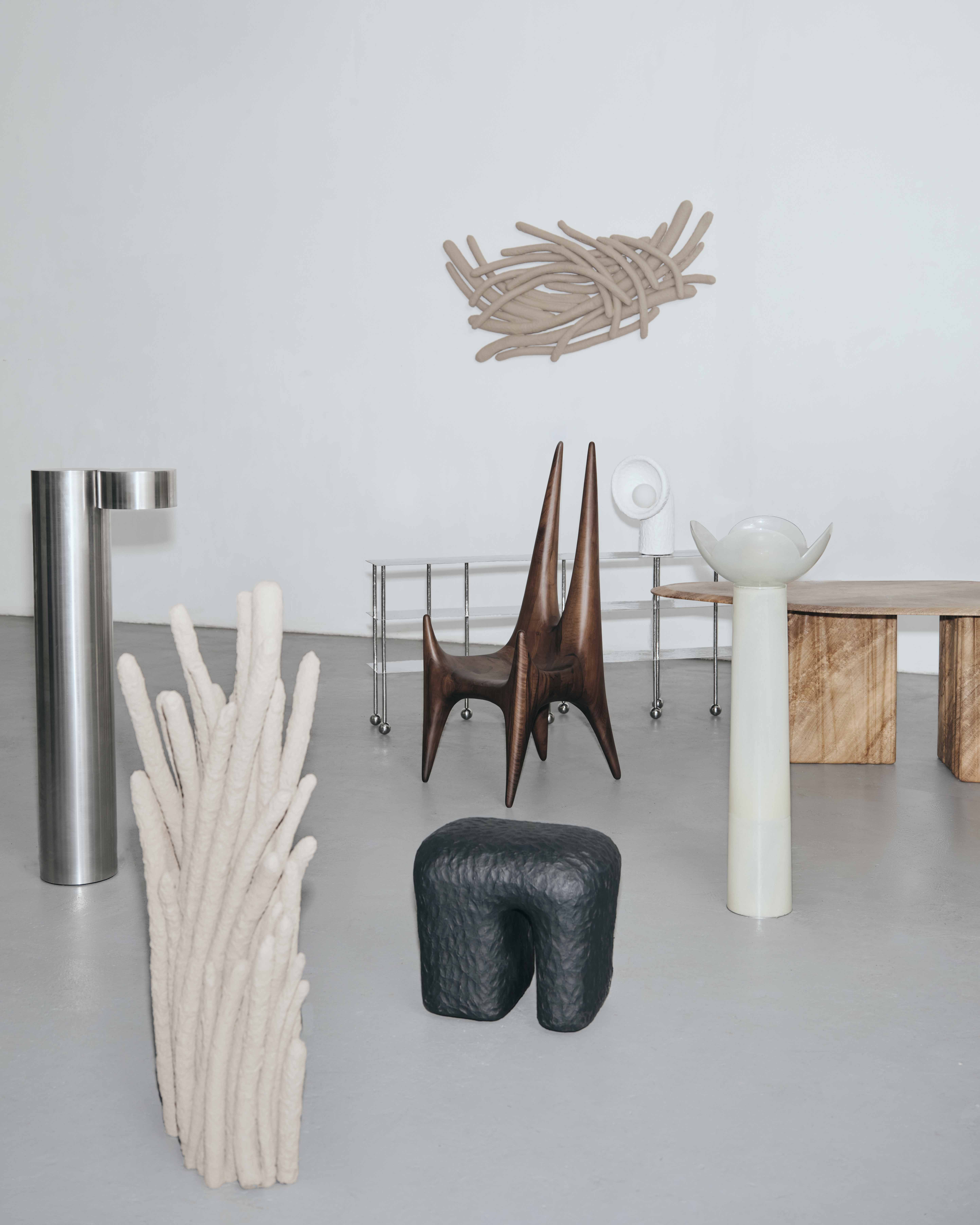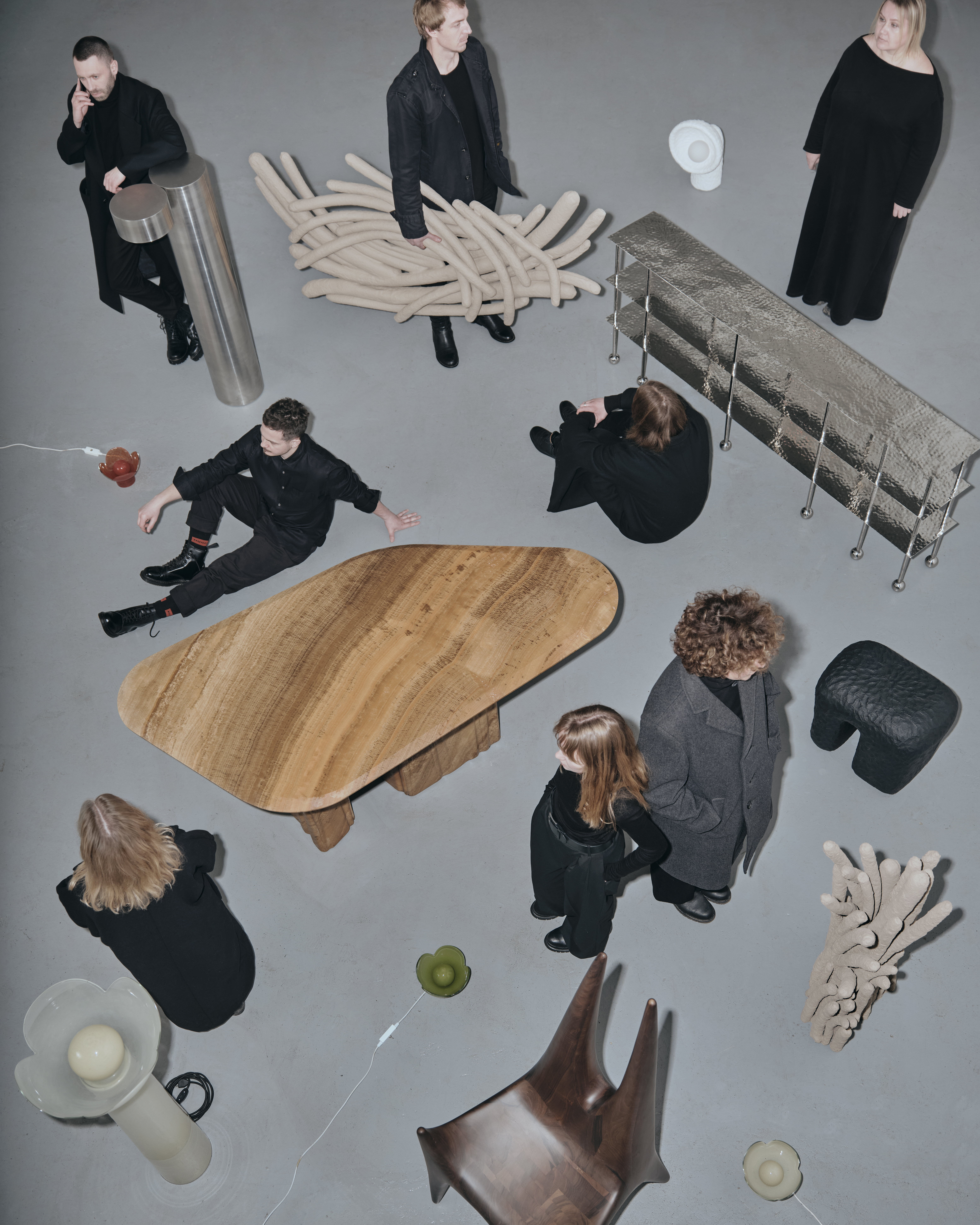



© Yakusha Studio
COLLECTIBLE In-Depth
March 2024
This series, COLLECTIBLE In-Depth, unveils the backstage of contemporary creation. Tackling various topics from personal designer processes to the position of collectible design on the global design market, COLLECTIBLE In-Depth offers different views to suit all tastes. Today we talk to Victoria Yakusha, who founded Victoria Yakusha Gallery.
COLLECTIBLE: How do you see the relationship between late 20th century design and contemporary design? How does one feed one another?
Victoria Yakusha: For me, dialog is very crucial, almost all of my work is a dialog between the past and the future. The enormous emotionality that exists in the traditional works of Ukrainian artists of the past is still not only inspiration, but also a proposal for a dialogue with the future. Famous Ukrainian zoomorphic Opishnia ceramics, serves as my inspiration and a place of strength for creating new works. The theme of zoomorphism, which I call animism, permeates our cultures, our traditions, so it can be seen so vividly in the works of past artists and in my collectible design works.
C: How can collectible design be a representation or reaction to the current societal, political or economic questions?
VY: I am an architect by education and have always been involved in architecture and interiors. However, being Ukrainian led me to collectible design in 2014. This is how I tell stories about my country, culture, and tradition. The Revolution of Dignity in 2014, which led to part of my country becoming occupied, brought the topic of identity into focus. The question of who I am became important not just for me, but for many of us.
C: How do you position your city in the global design market, what makes your city unique, trends?
VY: The uniqueness of Ukrainian design is exactly what I have been seeking and attempting to shape for a long time. What makes it unique? I have been pondering this question since 2014, gradually refining this idea and understanding our identity. Today, I see three key features — naivety, vitality, and wildness — which can be observed in Ukrainian design in various forms, manifestations, and textures. This combination, whether of all three aspects or each individually, along with the author's personal story, can create a truly distinctive effect.
C: How did you get into collectible design? Why did you start your gallery?
VY: In 2021, I founded my Antwerp-based gallery to share Ukraine's distinctive culture and art with the world. I aim to develop and promote high-quality Ukrainian design, featuring artists who embody our national design ethos. Contemporary Ukrainian design is multilayered, drawing from diverse cultures, traditions, and contexts. I believe it can invigorate the global design scene with its authenticity and vitality.
C: Can you talk about the designers you present at COLLECTIBLE this year, what makes their practice/pieces unique?
VY: At COLLECTIBLE, we present designers embodying distinctive aesthetics. I connect with earth and ethnic roots through naive forms and traditional crafts. Tetiana Krasutska and Andrii Mykhailiak return people to authenticity through sensual design. Anna and Sergii Baierzdorf intertwine naivety and craftsmanship. Yulia and Yevgen Melnychenko promote Ukrainian tradition using biomaterials. Aleksandr Bosenko explores the plasticity of natural stone, creating an illusion of weightlessness.
C: What is your favorite material?
VY: One of my favorite material is ZTISTA: made from a blend of cellulose, clay, flax fiber, wood chips, biopolymer.

© Yakusha Studio

© Yakusha Studio
COLLECTIBLE In-Depth
March 2024

© Yakusha Studio
This series, COLLECTIBLE In-Depth, unveils the backstage of contemporary creation. Tackling various topics from personal designer processes to the position of collectible design on the global design market, COLLECTIBLE In-Depth offers different views to suit all tastes. Today we talk to Victoria Yakusha, who founded Victoria Yakusha Gallery.
COLLECTIBLE: How do you see the relationship between late 20th century design and contemporary design? How does one feed one another?
Victoria Yakusha: For me, dialog is very crucial, almost all of my work is a dialog between the past and the future. The enormous emotionality that exists in the traditional works of Ukrainian artists of the past is still not only inspiration, but also a proposal for a dialogue with the future. Famous Ukrainian zoomorphic Opishnia ceramics, serves as my inspiration and a place of strength for creating new works. The theme of zoomorphism, which I call animism, permeates our cultures, our traditions, so it can be seen so vividly in the works of past artists and in my collectible design works.
C: How can collectible design be a representation or reaction to the current societal, political or economic questions?
VY: I am an architect by education and have always been involved in architecture and interiors. However, being Ukrainian led me to collectible design in 2014. This is how I tell stories about my country, culture, and tradition. The Revolution of Dignity in 2014, which led to part of my country becoming occupied, brought the topic of identity into focus. The question of who I am became important not just for me, but for many of us.
C: How do you position your city in the global design market, what makes your city unique, trends?
VY: The uniqueness of Ukrainian design is exactly what I have been seeking and attempting to shape for a long time. What makes it unique? I have been pondering this question since 2014, gradually refining this idea and understanding our identity. Today, I see three key features — naivety, vitality, and wildness — which can be observed in Ukrainian design in various forms, manifestations, and textures. This combination, whether of all three aspects or each individually, along with the author's personal story, can create a truly distinctive effect.
C: How did you get into collectible design? Why did you start your gallery?
VY: In 2021, I founded my Antwerp-based gallery to share Ukraine's distinctive culture and art with the world. I aim to develop and promote high-quality Ukrainian design, featuring artists who embody our national design ethos. Contemporary Ukrainian design is multilayered, drawing from diverse cultures, traditions, and contexts. I believe it can invigorate the global design scene with its authenticity and vitality.
C: Can you talk about the designers you present at COLLECTIBLE this year, what makes their practice/pieces unique?
VY: At COLLECTIBLE, we present designers embodying distinctive aesthetics. I connect with earth and ethnic roots through naive forms and traditional crafts. Tetiana Krasutska and Andrii Mykhailiak return people to authenticity through sensual design. Anna and Sergii Baierzdorf intertwine naivety and craftsmanship. Yulia and Yevgen Melnychenko promote Ukrainian tradition using biomaterials. Aleksandr Bosenko explores the plasticity of natural stone, creating an illusion of weightlessness.
C: What is your favorite material?
VY: One of my favorite material is ZTISTA: made from a blend of cellulose, clay, flax fiber, wood chips, biopolymer.

© Yakusha Studio

© Yakusha Studio
Contact
info@collectible.design
VIP PORTAL
EXHIBITOR PORTAL
PRIVACY POLICY
© 2025 Collectible
Contact
info@collectible.design
VIP PORTAL
EXHIBITOR PORTAL
PRIVACY POLICY
© 2025 Collectible